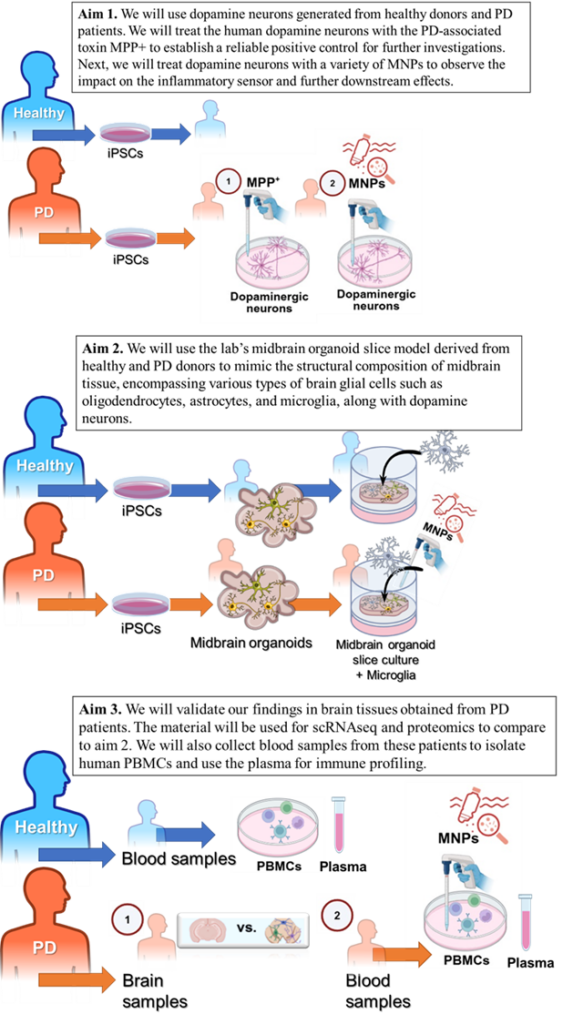The impact of environment polluting agents in Parkinson’s disease
Despite ongoing research, the evidence is inconclusive regarding whether exposure to microparticles induce neuroinflammation and drives neurodegeneration in PD. To address this knowledge gap, the concept idea of the project is illustrated below:

Publications
Monikh, FA., Lehtonen, Š., Kekäläinen, J., Karkossa, I., et al. 2024 Biotransformation of nanoplastics in human plasma and their permeation through a model in vitro blood-brain barrier: An in-depth quantitative analysis. Nanotoday, 59, 102466 https://doi.org/10.1016/j.nantod.2024.102466
Guden, D.S., Temiz-Resitoglu, M., Senol, S.P., Kibar, D., et al. 2021 mTOR inhibition as a possible pharmacological target in the management of systemic inflammatory response and associated neuroinflammation by lipopolysaccharide challenge in rats. Can. J. Physiol. Pharmacol., 99(9), 921–934 https://doi.org/10.1139/cjpp-2020-0487
Guden, D.S., Arıcıoglu, F. 2020. A link between PKR, inflammasome and synaptic plasticity: is it an emerging therapeutic option for cognitive dysfunction? Psychiatry and Clinical Psychopharmacology, 30(3), 313 https://doi.org/10.5455/pcp.20200801015342